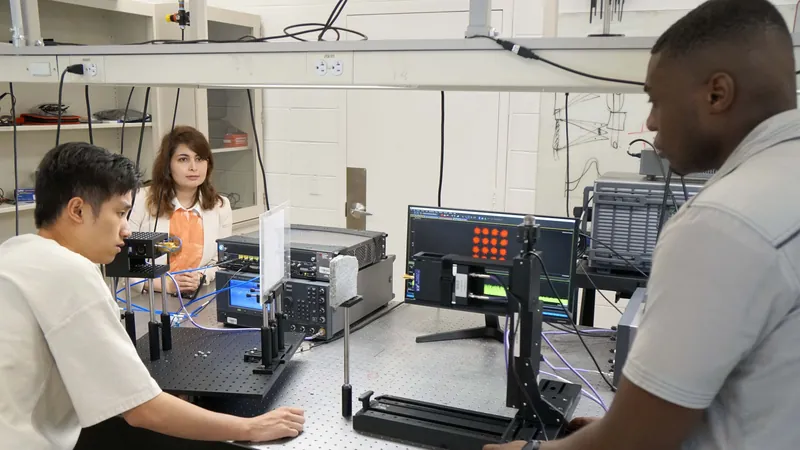
Revolutionary Breakthrough: Engineers Shape Ultrahigh Frequency Data Transmission with AI
2025-08-18
Author: Li
Engineers Unveil Game-Changing Wireless Data Transmission Technology
In a major stride for wireless technology, Princeton engineers have cracked the code on how to transmit vast amounts of data using ultrahigh frequency radio waves—crucial for advancements in fields like virtual reality and self-driving cars. However, these frequencies come with a significant challenge: they are easily obstructed by common objects, which can disrupt connections even if you simply walk into another room.
The Solution: Curving Waves to Avoid Obstacles
Researchers at Princeton Engineering have introduced an innovative machine-learning approach that teaches data signals to navigate around obstacles. Their findings, published in *Nature Communications*, reveal a system capable of adjusting transmission paths in real-time, allowing data to flow smoothly through complex environments.
Lead researcher Yasaman Ghasempour emphasized the importance of this breakthrough, explaining that transmissions in the sub-terahertz band could potentially handle ten times the data of current systems—an advantage that could fuel the next generation of data-hungry technologies.
The Challenge of Ultrahigh Frequency Signals
Unlike lower-frequency waves that can spread over larger areas, sub-terahertz signals are transmitted in focused beams, making them susceptible to blockages. While traditional methods using reflectors can bounce these beams, they are often impractical in everyday scenarios. Instead, Ghasempour's team has harnessed a unique technique allowing beams to curve around obstacles, reminiscent of the 'curveball' in baseball.
Real-Time Adaptation: A New Era for Wireless Communication
In this innovative system, the transmitters dynamically adjust the curvature of the beams to dodge new barriers as they appear, ensuring robust connectivity in shifting environments. Graduate student Haoze Chen explained the importance of having a system flexible enough to adapt to complex indoor layouts where a clear line-of-sight is absent.
Training an AI to Think Like an Athlete
Designing the perfect beam for various obstacles poses a significant challenge. Traditionally, aligning these beams has been laborious, requiring exhaustive scanning of environments. Chen drew a parallel to athletes, noting that like basketball players who rely on instinct and experience, their neural network is trained to optimize the beams based on past scenarios. Rather than costly physical trials, they developed a simulator to enable faster virtual training.
Precision Perfected: The Neural Network's Role
The brilliance of the team's approach lies in applying physics to train the neural network, ensuring it generates the most effective beam shapes for any given situation. Ghasempour noted that this work provides a solution to long-standing obstacles in adopting high-frequency wireless communication, paving the way for rapid, reliable data transmission in a multitude of innovative applications.
A Vision for the Future: Ultra-Fast Connectivity for All
With further developments, researchers envision a future where intelligent transmitters can navigate intricate environments seamlessly, facilitating ultra-fast wireless connections for everything from immersive virtual reality to fully autonomous vehicles. Stay tuned for this exciting evolution in wireless technology that could revolutionize how we interact with the digital world!




 Brasil (PT)
Brasil (PT)
 Canada (EN)
Canada (EN)
 Chile (ES)
Chile (ES)
 Česko (CS)
Česko (CS)
 대한민국 (KO)
대한민국 (KO)
 España (ES)
España (ES)
 France (FR)
France (FR)
 Hong Kong (EN)
Hong Kong (EN)
 Italia (IT)
Italia (IT)
 日本 (JA)
日本 (JA)
 Magyarország (HU)
Magyarország (HU)
 Norge (NO)
Norge (NO)
 Polska (PL)
Polska (PL)
 Schweiz (DE)
Schweiz (DE)
 Singapore (EN)
Singapore (EN)
 Sverige (SV)
Sverige (SV)
 Suomi (FI)
Suomi (FI)
 Türkiye (TR)
Türkiye (TR)
 الإمارات العربية المتحدة (AR)
الإمارات العربية المتحدة (AR)